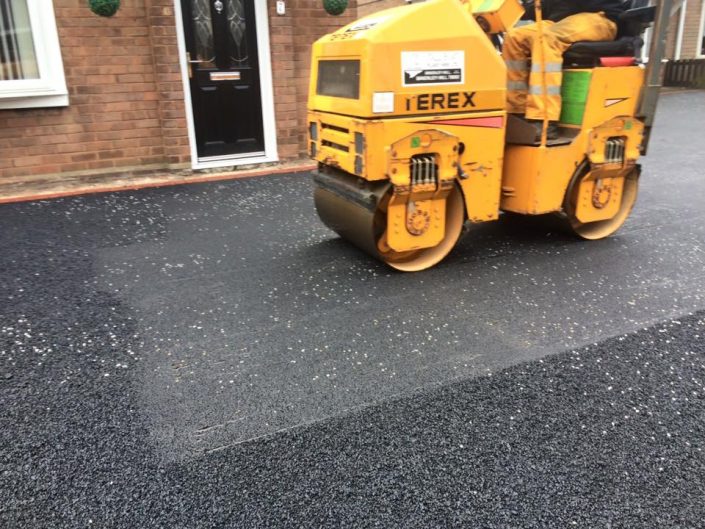Steps of the Tarmac Laying Process
When it comes to choosing a new driveway solution, there are many options out there. Tarmac is one of the most popular types of driveway out there. This is due to the durability, cost-effectiveness and lifespan of the material. When installed well, tarmac can last for over a decade without needing to be repaired. Even when maintenance is needed it is quicker, easier and cheaper than a lot of other methods.
Many people who opt to tarmac their driveway are unaware of the tarmac laying process, so this article will give you an idea of how your contractors may carry out the work.

Demolition and Removal
To get the best results from your tarmac driveway, you need to ensure that all of the pre-existing surface is demolished and removed. This will allow the contractors to give the driveway ample support to ensure it’s as strong as it can be.
Depending on the size of the area, demolition and removal is done using heavy machinery, this is why you need to hire a professional tarmac laying company.
Some companies take the old asphalt and concrete and turn it into new, reusable asphalt. Most debris from the old surface can be recycled, so check with your tarmac contractors to see what they do with these materials afterwards.
Grading and Sloping
Now that the old surface has been successfully demolished and removed, your tarmac layers will prepare the surface to there is the correct water drainage. They will ensure that the water will run off of the drive efficiently. If this step is not done, the tarmac can be severely damaged due to water. This includes problems occurring such as;
- Potholes
- Creaks
- Heaving

Preparation of the Sub Base
The subbase is one of the most important parts of installing a new tarmac driveway. This base provides a stable and strong surface that will support the top of the surface. This base will also help protect from the effects of freeze-thawing in the winter. If the base is not compacted enough the durability will be far poorer. Base thickness, stability and compaction are all very important steps in the installation process.
Proof Roll, Undercutting and Sub Base Repair
Proof rolling is done by tarmac companies that work to a high standard. This allows any soft tarmac left on the sub-base to be re-rolled and flattened out again.
Binder and Surface Course
Once the subbase is laid and repaired (if needed), then the binder will be added. This a large aggregate made up of oil, which makes it strong and durable. The binder layer is what gives the tarmac the most strength.

Install New Tarmac Surface
Next is time for the top layer of tarmac to be installed. This gives the surface a smoother finish. This type of tarmac is made from sand, oil and aggregate. Mixed together, these make a jet-black tarmac that allows for a smooth ride, as well as giving off a shiny and attractive finish.
Butt Joints and Transitions
Butt joints are what merges the tarmac with a pre-existing pavement or road. It is extremely rare for it not to need to be merged with another, similar material. These joints need special attention to help ensure that the water runs off them sufficiently.



